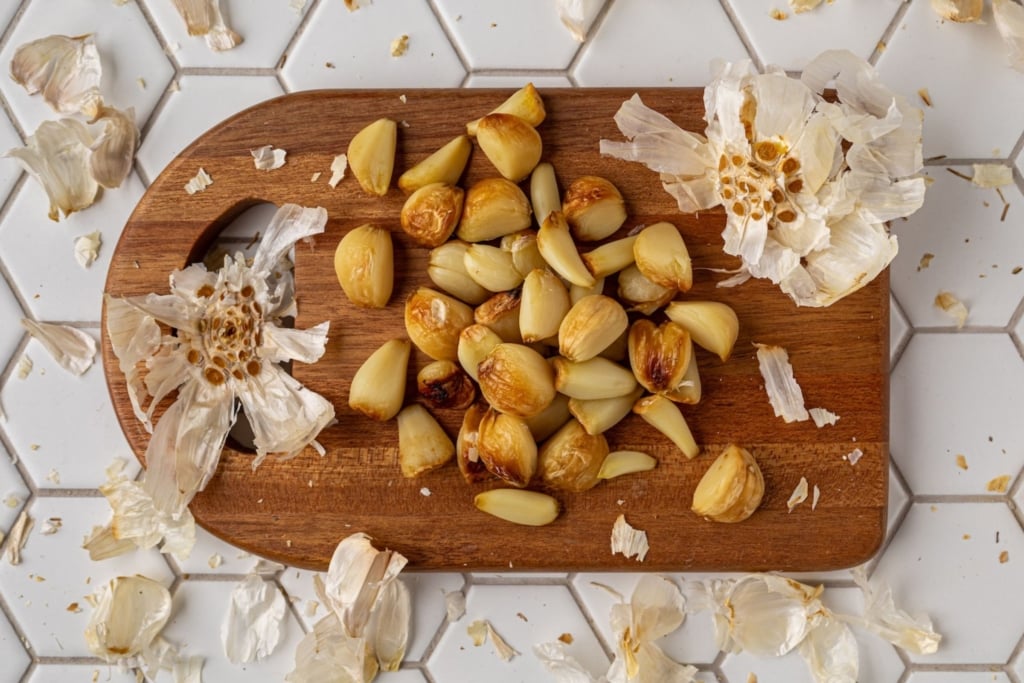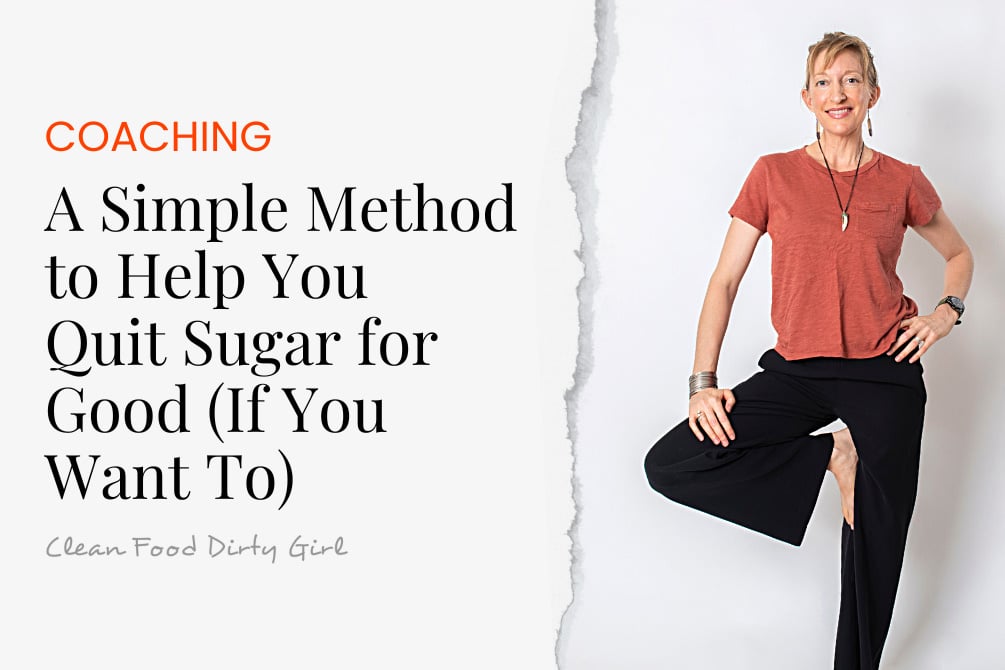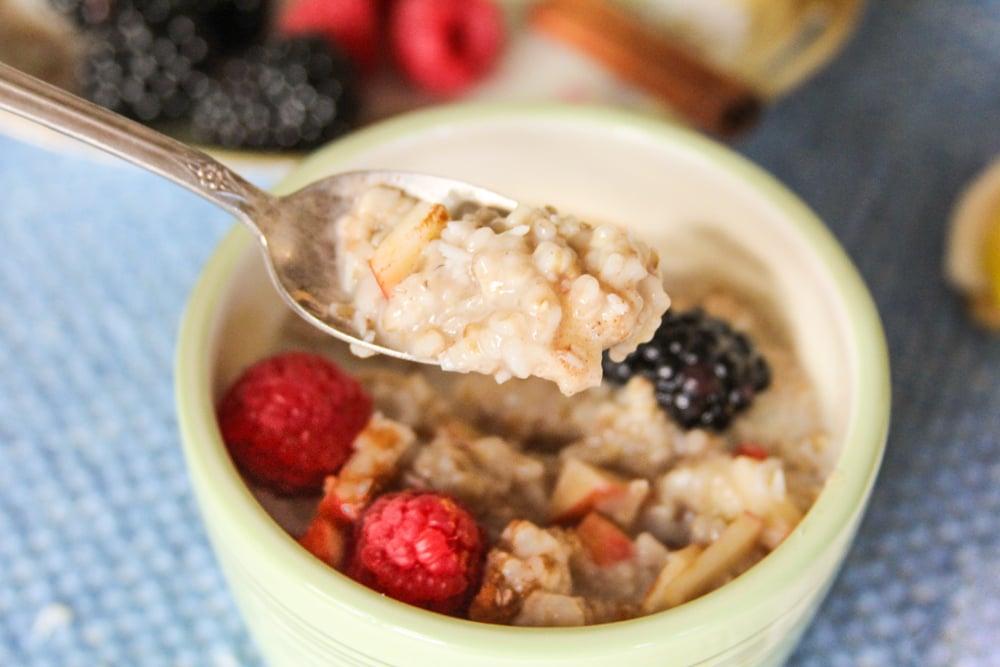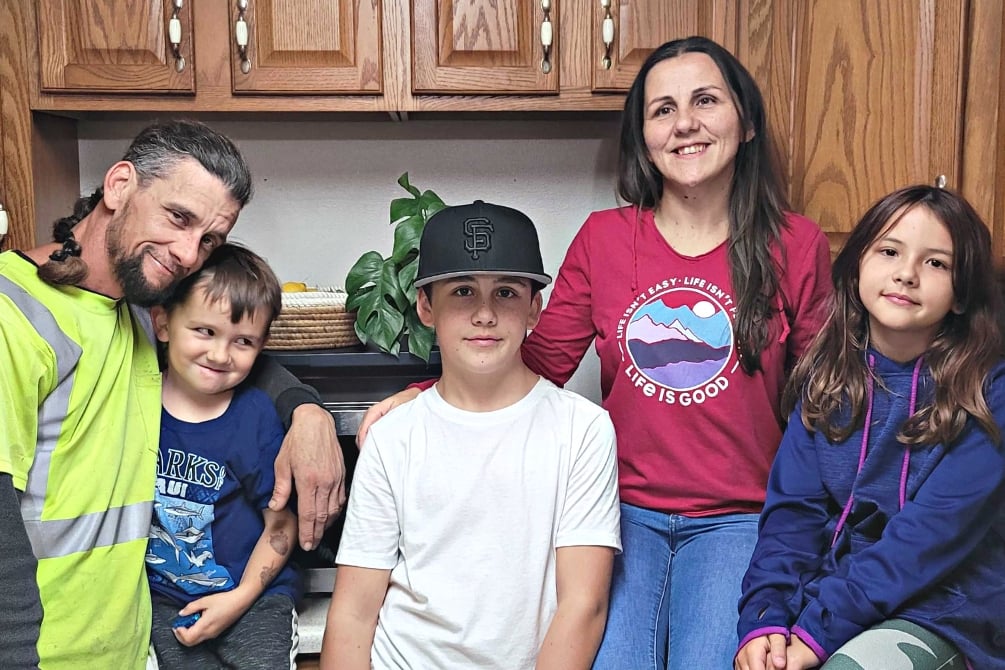Whole-Food Plant-Based Nutrition

By Molly Patrick
May 19, 2022,
By Molly Patrick
May 19, 2022,
One of the reasons why whole-food plant-based eating is so loved is because it helps people step away from the diet mindset. When you eat a whole-food plant-based diet, it’s all about the quality of calories you’re eating instead of the quantity. When we talk about quality, we mean nutrient density, which is the ratio of nutrients per calorie. The most nutrient-dense foods on the planet are whole plant foods.
When people switch to this way of eating, it’s a paradigm shift, and for a lot of people, their whole relationship with food changes.
Old way:
Eating meat, dairy, eggs, processed food, veggies, and fruit.
The focus is on fat, protein, carbohydrate intake, and overall calorie counting.
New way:
Eating veggies, fruits, beans, legumes, whole grains, nuts, seeds, herbs, and spices.
The focus is on eating a wide range of whole plant foods while listening to the body without stressing about nutrition labels or numbers.
When we eat a wide range of whole plant foods, we get healthy fats, plant proteins, and complex carbohydrates that the body needs and loves. We also get lots of fiber, vitamins, minerals, antioxidants, and phytochemicals that help our bod thrive.
Change beyond the calculator
When people switch to this way of eating, they literally eat their way to health. This is a shift to overall health and wellbeing instead of counting and categorizing food.
Since 2016, we’ve seen thousands of Clean Food Dirty Girl members change their life by eating more plants. They’ve followed our whole-food plant-based recipes and meal plans and changed their relationship with food. They shifted the paradigm.
Here’s a look at how some of our members have been able to improve their health and transform their lives by following our meal plans and recipes without stressing about numbers.
How our meal plans and recipes are designed
Our whole-food plant-based recipes aren’t designed to meet specific dietary requirements.
When developing our recipes, we focus on nutrient diversity and taste.
Nutrient diversity is a wide range of nutrient-dense foods. This spectrum allows the body to benefit from lots of nutrients working together synergistically—the more diverse, the better.
We focus on taste because if the food isn’t delicious, it’s easy to go back to eating meat, dairy, and processed food. This lifestyle change isn’t sustainable if the food isn’t giving you mouthgasms aplenty.
These have been the guiding principles for our recipe development from the start, and they will continue to guide us in the future.
Because whole-food plant-based eating is generally more about listening to your body and eating lots of different plants, and less about relying on nutrition labels, we haven’t offered nutrition information.
The need for nutrition information
However, some people have health conditions and keeping a keen eye on data is essential and others simply enjoy tracking their intake.
It’s been one of our most requested updates. So, with lots of blood, sweat, tears, button clicking, team meetings, mouse tapping, testing, and plant munching, we launched the option to view nutrition information.
Adjusting recipes
Because our recipes aren’t designed to meet any specific dietary requirements, it’s up to whoever is cooking to adjust them to fit their needs.
Want low-fat meals? Choose recipes without nuts, seeds, coconut milk, or avocado, or make substitutions when those items come up. White beans, cooked potato, and tofu can be used to substitute nuts and seeds, and water or lower fat non-dairy milk can be used to replace coconut milk.
Need less sodium? We recommend that you omit the salt or salty ingredients completely, or use half the amount called for. These salty ingredients include soy sauce, miso, sauerkraut, and coconut aminos.
Trying to lose weight while eating a plant-based diet? Watch the Releasing Weight training (episode 2) in the Group Coaching section of Clean Food Dirty Girl before making any adjustments.
There are always considerations people will have to make for themselves regarding what they put in their bodies. Our job is to create delicious recipes with lots of different whole plant ingredients so that people will eat lots of plants for decades to come and enjoy the benefits now and well into the future.
Viewing nutrition information in Clean Food Dirty Girl
Nutrition information in Clean Food Dirty Girl is an optional tool to help those who need or want this information. You’ll see an icon on meals and recipes below the description. Click the icon to view the data.
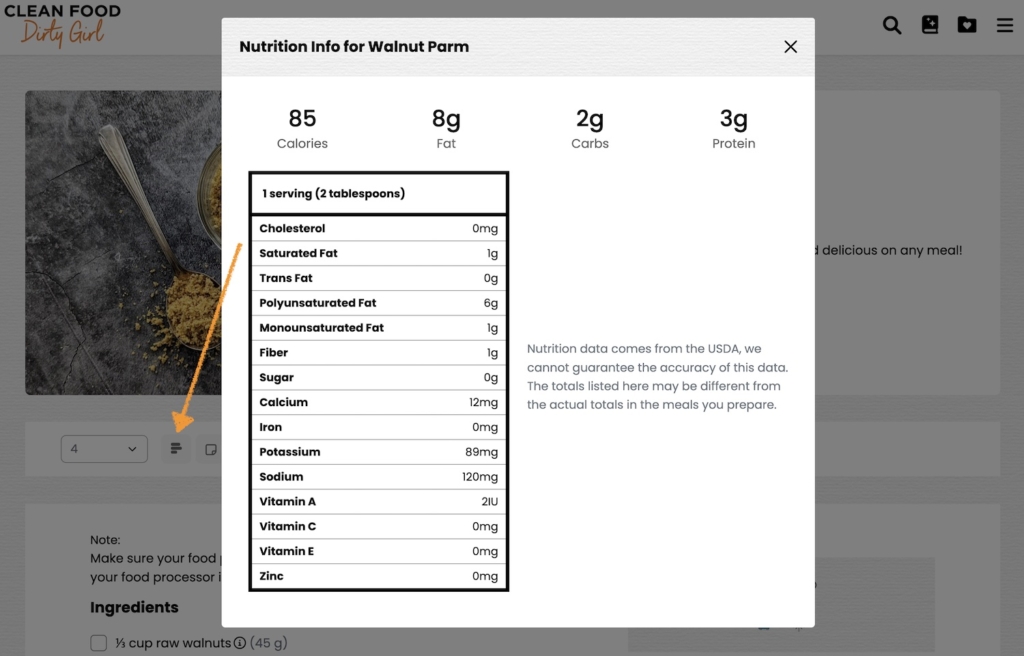
If you don’t want to see nutrition information, learn how to turn it off here.
Making sense of the data
Keep in mind, we are not qualified to offer guidance on the right nutrition intake for you. The nutrition data comes from the USDA; we cannot guarantee its accuracy. If utilizing and analyzing nutrition information is important to you, we suggest looking for a plant-based dietician in your area.
Having defined serving sizes for our meals is necessary to generate grocery lists in our meal plans and to calculate nutrition data. That said, you know your body best and only you know how much food you need. The serving sizes in Clean Food Dirty Girl are estimates, and they typically allow for generous portions. Always feel free to adjust accordingly.
If you have any questions, please contact us!
Molly
You may also enjoy...
Love the food that loves you back
Get instant access to thousands of plant-based recipes and meal plans, no credit card or perfection required.

